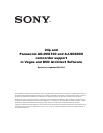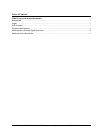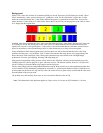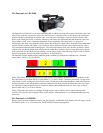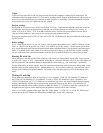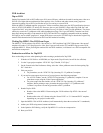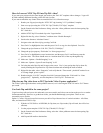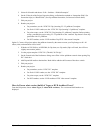
24p and Panasonic AG-DVX100 and AJ-SDX900 camcorder support in Vegas and DVD Architect Software
3
Background
While NTSC video runs at about 59.94 interlaced fields per second, film runs at 24 full frames per second. When
film is transferred to video, a process known as 2-3 pulldown is used. The first film frame is copied into 2 video
fields, the second film frame into 3 video fields, and then the process is repeated for the entire film. Every 4 film
frames become 10 video fields, or 5 video frames. Due to the 59.94 field rate, the playing time of the video is about
0.1% longer than the original film.
Similarly, when film is transferred to PAL video, each film frame becomes 2 video fields. Because PAL video runs
at 50 fields per second, the playing time of the video will be 4% shorter than the film (and the audio needs to be
repitched or everyone’s voice gets higher!). 24 fps really is a universal format that can (with these conversions) be
shown in any theater or video broadcasting system. No other format enjoys so many conversion options.
Nearly all theatrical films and most prime-time television shows are shot on film and transferred to video using
pulldown, and they have a very different “look” in their frame cadence than soap operas, news programming, and
home video shot in 60i (interlaced) video. Most people subconsciously associate this look with high-budget
productions. Of course, good lighting, directing, and acting help, too.
Many people using desktop editing systems want to achieve this “film look” and have tried using many processes,
including expensive software plug-ins, to get it with some success. The ultimate solution, however, is to shoot and
edit at 24 frames per second without using complex and slow plug-ins.
Finally, many budget-conscious independent filmmakers want to shoot on lower-cost video equipment and then have
a way to transfer to film should their production be successful (i.e., picked up for theatrical release). While there are
processes that can do this for 60i, 30p, and 25p video, the results are not as good as they could be had the video been
shot and edited at 24p to begin with.
The problem was, until recently, there were no low-cost cameras that shot video at 24p.
Note: The information in this document applies to Vegas version 4.0 or later or DVD Architect 1.0 or later.



